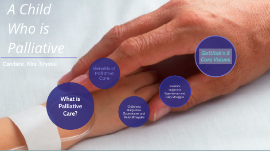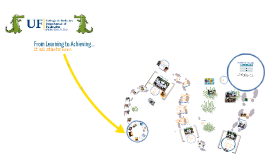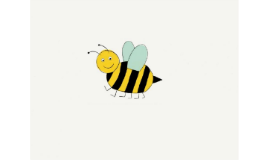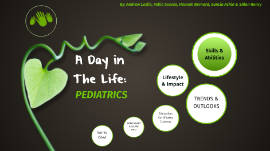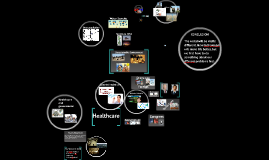Pediatrics Presentation
Transcript: General: Denies unusual weight gain or loss, fever, fatigue, temperature sensitivity, chills, fatigue, and sweats. Skin: Denies rashes, hives, itching, pigmentation/texture changes, lumps, moles, nail changes, and masses. Head: Denies trauma, dizziness, injury, syncope, and LOC. Eyes: Denies familial eye disorders, photophobia, dryness, and redness. Ears: Denies infections, discharge, and pain. Nose: Denies congestion, snoring, mouth breathing, discharge, and epistaxis. Throat/Mouth: Denies difficulty swallowing, hoarseness, bleeding gums, or an abscess. Teeth: R.E. has no teeth as of today. Neck: Denies any swollen glands/masses, stiffness, pain, thyroid problems, or any movement limitations. Respiratory: R.E. has CHF that is currently being managed by Lasix. She follows up every 3 months with cardiology. She has been hospitalized twice with RSV/bronchiolitis and pneumonia and was on O2 in the hospital. Currently denies sputum, wheezing, coughs, asthma, expectoration, cyanosis, edema, dyspnea, chest pain, and lung infections. Cardiovascular: R.E. has a common AV valve with mild AV valve regurgitation beginning in the middle of the heart and jetting towards the lateral wall of the right atrium. The common AV valve has thick chordal attachments to the crest of the septum from the right sided valve. The chordal attachments split the flow across the VSD into two separate jets across the VSD. Small primum atrial septal defect with left to right shunt. There is also a small secundum atrial septal defect with left to right shunt. There is no atrial or ventricular enlargement. She is currently managed on Lasix. Her cardiologist is following up every 3 months and she will have surgery around her first birthday. According to her cardiologist, R.E. does not have any physical restrictions; she does not require endocarditis prophylaxis. Gastrointestinal: Denies Vomiting, diarrhea, constipation, abdominal pain or discomfort, jaundice. R.E produces formed, soft bowel movements. Genitourinary: Denies dysuria, frequency, polyuria, pyuria, hematuria, and vaginal discharge. Extremities: Denies reduced ROM, warmth, swelling, redness, and deformities. Neurologic: Denies syncope, seizures, tremors, postural deformities, spasms, paralysis, and weakness. Hematologic: Denies clotting problems, easy bruising, anemia, swollen lymph nodes, easy bleeding, transfusions, and other blood abnormalities. Endocrine: Denies polyuria, polydipsia, polyphagia, goiter, growth disturbances, excessive sweating and skin/hair changes. Ears- R.E. has small pinnae, no tenderness in tragus, pinna or mastoid process. Otoscopic exam clear cone of light, no discharge or redness. Nose- R.E. has a flattened nasal root, the patency of nares is good, no discharge or polyps Mouth/pharynx- Large tongue, no redness, ulcerations, bleeding lesions or exudates. Thorax/lungs- normal respiratory rate and pattern, chest symmetrical, no labored breathing, non-tender to palpation, lungs clear to auscultatation. Cardiovascular system- Systolic regurgitant murmur auscultated. RRR, temporal, carotid, brachial, radial, ulnar, femoral, posterior tibial, and dorsalis pedis pulses are all normal. Abdomen- No guarding or tenderness on palpation, bowel sounds are WNL. Soft abdomen to palpation. No masses or organomegaly. Musculoskeletal- Mild hypotonia in lower extremities. Full range of motion demonstrated in upper and lower extremities. Nervous system- facial expressions intact and normal. Her biceps and brachioradialis reflexes are intact. Antenatal: R.E was born to a 45 year old G3P2 healthy mother via C-section at 39 weeks gestation. Prenatal history was remarkable for Down syndrome suspected due to increased nuchal translucency. An amniocentesis was not performed. Mother had a healthy pregnancy with no complications. Mother is O+ blood type. Natal: Pregnancy was 39 weeks in length. R.E weighed 6 lbs 1 oz at birth. A C-section was scheduled at 39 weeks due to previous C-section in 2008. Mother had an epidural during the C-section. Neonatal: APGAR scores were 7 and 8 at 1 and 5 minutes respectively. There were no signs of jaundice at birth. No excessive mucus, paralysis, convulsions, fever, hemorrhage, or birth injury. At birth some dysmorphism was present which were suggestive of Down's. These included close set eyes and epicanthal folds. Chromosome analysis was completed which confirmed trisomy 21: 47, XX, +21. R.E had some difficulty feeding in the hospital, but after day one, she learned to latch on and suck. A systolic regurgitant murmur was discovered in the hospital, so family was referred to cardiology. A state newborn screen was completed and found to be within normal limits. R.E was d/c from the hospital with the mother three days after delivery. She weighed 5 lbs 14 oz. Commercial Break R.E. is a 7 month old Caucasian female with Down syndrome, VSD, ASD, and CHF. She is currently managed on Lasix. She has had two recent hospitalizations due to RSV/bronchiolitis






